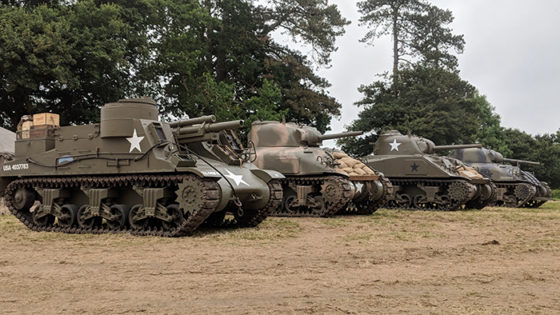
IN HONOUR OF the 70th anniversary of VE Day, MilitaryHistoryNow.com invited warbird photographer Kai Hansen to share a few of his favourite images of some of the legendary aircraft of the Second World War. A seven-year veteran of Danish air force, Hansen has had a life-long fascination with aviation. We are pleased to share his work here. Enjoy!
Unsung Hero

While the Supermarine Spitfire is remembered as the plane that won the Battle of Britain, it was the Hawker Hurricane that was the RAF Fighter Command’s true workhorse of those desperate days of 1940. Quickly rendered obsolete, subsequent variants of the aircraft would see action in North Africa and the Pacific where it would excel in the ground attack role.
Butcher Bird

Heavier and more robust than the illustrious Messerschmitt Bf-109, the Focke Wulfe FW-190 was equally capable as either a fighter or a light bomber. More than 20,000 were manufactured between 1941 and 1945.
American Icons

A Republic P-47 Thunderbolt (“Tarheel Hal” pictured here) with Boeing’s legendary B-17, Flying Fortress bringing up the rear (dubbed “Thunderbird“). Both are from the Lone Star Flight Museum of Galveston, Texas.
Ugly Duckling

Slow, awkward and entirely inelegant, Germany’s Fieseler Fi 156 Storch or “Stork” was an all-purpose utility plane. The aircraft first took to the skies in 1937 and continued to serve in a number of European air forces long after the Second World War. Capable of taking off and landing in extremely tight spaces, it proved to be a highly effective bush-plane.
Triple Threat

Two North American P-51D Mustangs, “Double Trouble Two” (top) and “February” (bottom) and the Lockheed P-38 Lighting “Skidoo” (middle).
Bewitched!

The Collings Foundation‘s own Consolidated B-24 Liberator, “Witchcraft” along with a Betty Grable lookalike, Scottsdale, Arizona.
Fast Mover

A U.S.-built replica Messerschmitt Me 262 dubbed “White 1”. Everett, Washington’s Storm Birds Me-262 Project manufactures two-seat facsimiles of the notorious Nazi jet. This model belongs to the Collings Foundation. The group reportedly offers flight training in the plane for $4,500 an hour.
Iron Annie

Germany’s Junkers Ju-52 began in the 1930s as a civilian airliner. With the outbreak of war, the three-engined transport was pressed into service with the Luftwaffe where it hauled men and materials. Some even served as impromptu bombers.
The Mighty Spit

No other plane symbolizes the RAF in World War Two like the Supermarine Spitfire. The Mk. XVI Spit pictured here is painted in the markings of the Royal Canadian Air Force’s legendary 421 Squadron.
BONUS

While not a major contributor to the Allied victory in Europe, we couldn’t resist adding this shot of the Vought F4U Corsair. The iconic carrier-based fighter was ruled the skies of the Pacific War.

Kai Hansen is a self-described aviation enthusiast who has been been involved in aviation photography since 1960s. To see more of his work, see more of his work at worldairphotography.com.










Hey there Kai! While I was doing research for my aviation book I came upon some of these P-47 images and thought they looked awfully familiar like mine and then I saw your name and photo. I remembered I was on that Skyvan aircraft the same day you were. You can reach me at jglyda@gmail.com. Great Shots!
Joe Glyda (friend of Moose)